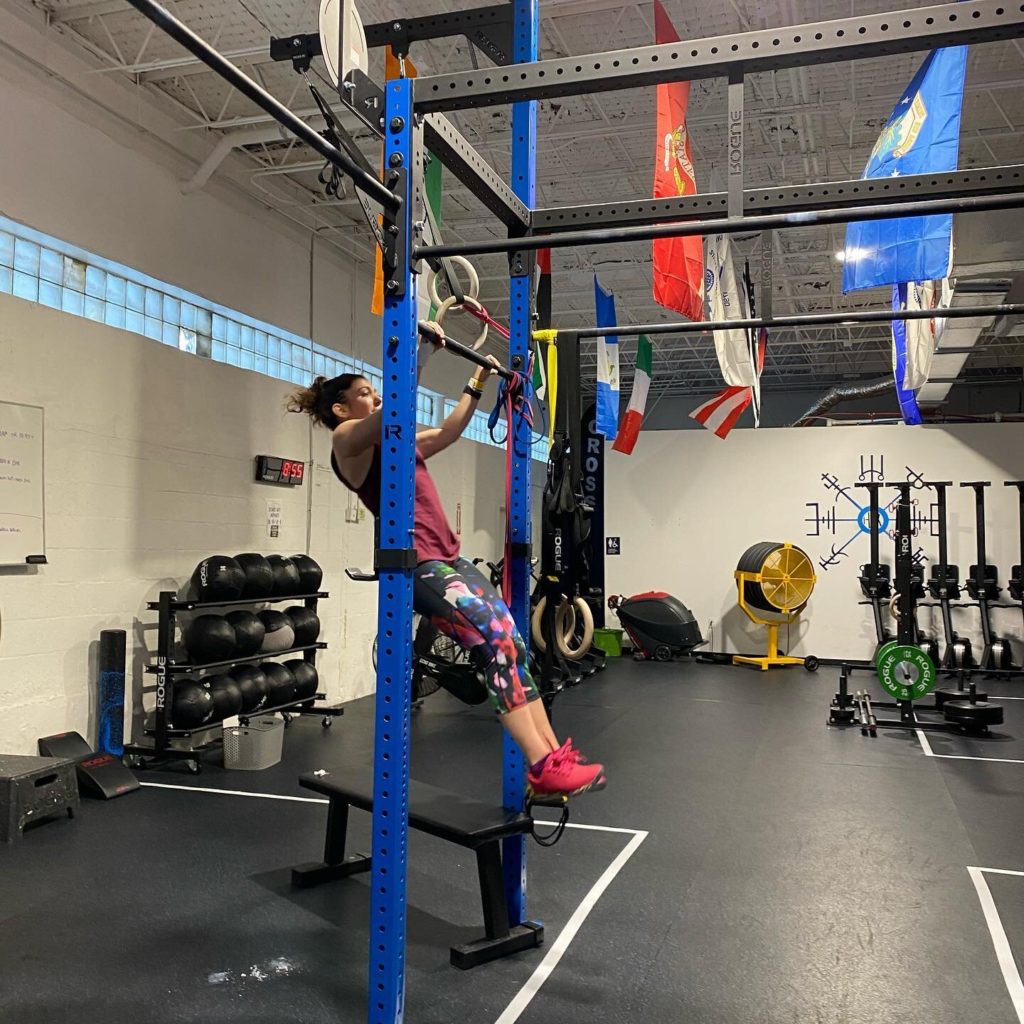One of the biggest things CrossFitters get ripped on for is the kipping pull-up.
Having done CrossFit for 7 years, I have heard everything from “those aren’t real pull-ups” to “you’re just gonna injure yourself.”
Let’s get one thing straight, those kipping pull ups should be viewed more as big kips rather than cheater pull-ups.
If that is the case, then what is a pull-up and why do CrossFitters kip?
The Strict Pull-Up
Here are the broadly accepted rules of a pull-up:
-
Hang from a bar, rings, or handles with your feet off the ground.
-
Start with straight arms at the bottom of the rep.
-
Arms pull/push down on the bar to bring the chin above the height of the hands.
-
Controlled descent back down by extending the arms and repeat.
Sounds pretty straight forward right? I think we can all agree those actions constitute a pull up. Welp, that means a kipping pull-up is a pull-up. It also means that chin-ups (a pull-up but the hands face the athlete) are pull-ups.
So let’s add two rules to differentiate a “pull-up” from a true strict pull-up.
-
Hips and legs must not move throughout the rep.
-
Palms must face away during whole movement.
Great, now the bros are satisfied! Now we have a strict-pull up that no one can scoff at. It is a movement that is free to perform and is an excellent way to create a strong upper back and core when done without crossing your legs. It is infinitely scaleable for all athletes and truly a wonder to behold when athletes can perform multiple reps in a row.
So, why add a kip? Why kip at all? Well, a kip has a different purpose.
The Kip
The kip is a movement where we go between two of the strongest gymnastic shapes we can make: Arch and Hollow.
Arch is just a standard superman hold. Hollow is just the reverse where instead of laying on our stomach raising our legs and arms, we lay on our back. Arch when being performed on the ground should be felt in the mid and lower back. Where as Hollow should be felt in our abs.
When we use our hips to transition between these two shapes while holding onto a bar, we can create upward momentum. The height of the kip can be increased by the amount of power we can put into our hips and pressing down on a pull up bar or rings with our hands.
When we do this in CrossFit we use it for what we call pull-ups, chest to bar pull-ups, and muscle-ups. In practice those names are used more to determine the range of motion we use for each kip rather than trying to work on overall lat strength.
When we view the kipping pull-up this way we can stop viewing it as a lat building and focus on what kipping pull-ups are really focused on, body control.
While we do work on the lats, biceps, and traps in a kipping pull-up the real focus is on timing and control. Each rep an athlete has to create a rhythm and adjust that rhythm as each rep goes on. The control comes from coordinating the efforts of our hips, arms, and upper back. (For example: if an athlete is coming too close to the bar, more engagement from the lats is needed.)
This control translates to anything from keeping the spine neutral in the deadlift to trying to go across the monkey bars for the first time.
Butterfly Pull-Ups?
This is the kipping pull-up that most people would recognize from watching CrossFit on TV.
The different between a butterfly pull-up and a kipping pull-up is that at the top of the rep for a butterfly, the athlete falls underneath the bar and begins initiating the next kip. A regular kipping pull-up has the athlete push away from the bar at the top of the rep.
Without proper shoulder strength, a butterfly pull-up is dangerous. It can cause slap-tears in the labrum (a piece of fibrocartilage that helps keep your shoulder in place) as well as other shoulder injuries when performed before the athlete is ready or incorrectly.
This pull-up is made can be done safely when done right and it’s primary purpose is speed. If you wish to compete in CrossFit, this pull-up is worth while to develop the strength for. If you are just working out to be as fit as you can be, put your focus into other movements.
How should kipping pull-ups be used?
In our gym we believe that kipping pull ups are there to teach coordination while strict pull-ups are there to build strength. There is overlap between the two and a solid combination of both is the foundation for an athlete to become their fittest self.
Kipping pull-ups should not be attempted without a solid foundation in learning to do smaller kips. Throwing your body up at a pull-up bar isn’t a kip, it’s dangerous.
Learning to do kipping pull-ups the right way and in a safe progression can be done by visiting a gym like ours! A coach that can assess where you are at and provide the proper steps for you to get your first pull-up is critical to getting to your goals the right way. Come on by to see how our Vegvisir Coaches can help you today!
You can also sign up for our gymnastics challenge starting this Monday! Each athlete receives personal programming and access to our Saturday morning gymnastics clinics!

